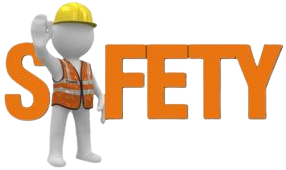Personal Protective Equipment (PPE)
- Hard Hats: Protect against head injuries from falling objects.
- Safety Glasses: Shield eyes from dust, debris, and chemicals.
- Ear Protection: Use earplugs or earmuffs in noisy environments.
- Respirators: Protect against inhalation of harmful substances.
- Gloves: Choose appropriate gloves for tasks to prevent cuts, burns, or chemical exposure.
- High-Visibility Clothing: Ensure workers are easily seen in environments with vehicle traffic or low visibility.
- Safety Footwear: Use steel-toed or slip-resistant shoes to protect feet from heavy objects and provide traction.
2. Training and Education
- Safety Orientation: Provide new employees with training on safety policies, procedures, and PPE usage.
- Regular Training Sessions: Conduct ongoing training on specific hazards, emergency procedures, and equipment operation.
- First Aid Training: Ensure employees are trained in basic first aid and CPR.
3. Hazard Assessment and Control
- Site Inspections: Regularly assess the work site for hazards (e.g., slips, trips, falls, electrical hazards).
- Job Safety Analysis (JSA): Analyze tasks to identify potential hazards and implement controls before beginning work.
- Implement Controls: Use engineering controls (e.g., guardrails, ventilation) and administrative controls (e.g., work rotation, safety policies) to minimize risks.
4. Emergency Preparedness
- Emergency Plans: Develop and communicate clear emergency procedures for various scenarios (e.g., fire, chemical spill, injury).
- Emergency Kits: Keep first aid kits, fire extinguishers, and emergency equipment readily accessible on-site.
- Communication Systems: Ensure effective communication tools are available for emergencies, such as radios or mobile phones.
5. Safety Culture
- Encourage Reporting: Create an environment where employees feel comfortable reporting safety concerns or near-misses without fear of retaliation.
- Promote Teamwork: Foster a culture of teamwork and collaboration to ensure everyone looks out for one another.
- Recognition Programs: Implement programs to recognize and reward safe behaviors and practices.
6. Regular Maintenance and Inspection
- Equipment Safety Checks: Regularly inspect and maintain tools and equipment to ensure they are in safe working condition.
- PPE Maintenance: Check PPE for wear and tear, and replace items as needed.
7. Follow Regulations and Standards
- Compliance with Regulations: Ensure adherence to local, state, and federal safety regulations (e.g., OSHA standards).
- Stay Updated: Keep up with changes in safety regulations and industry standards.


Leave a Reply